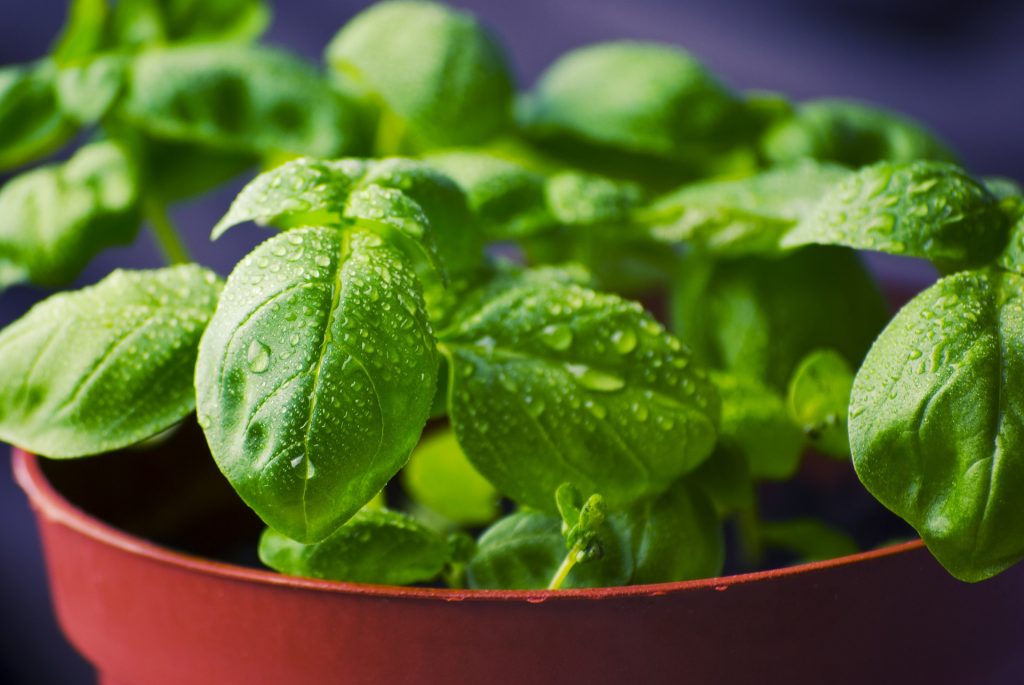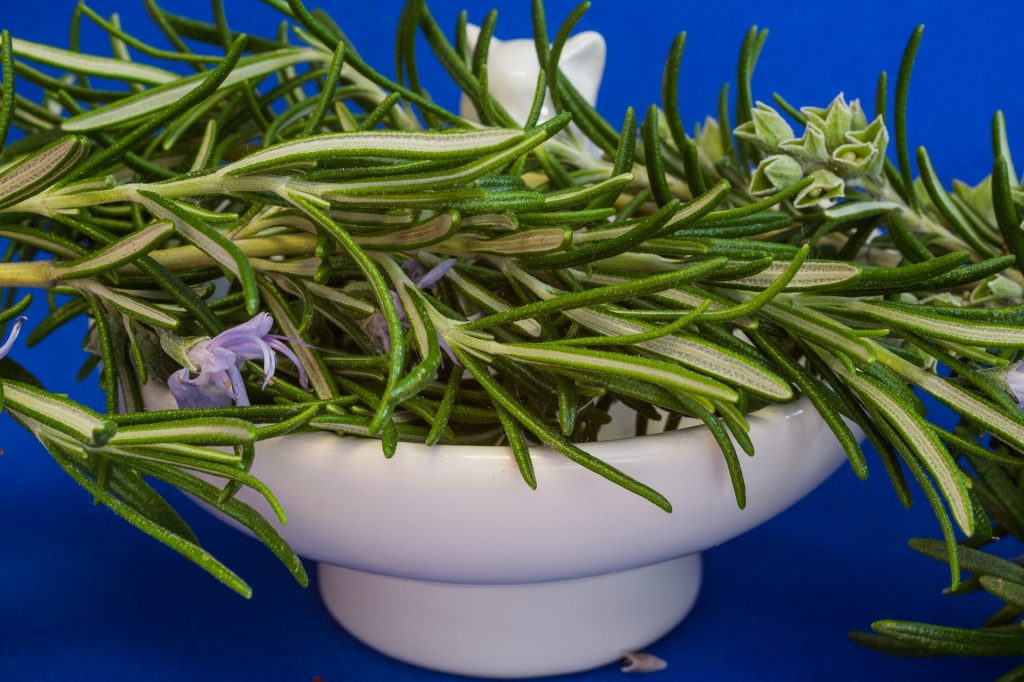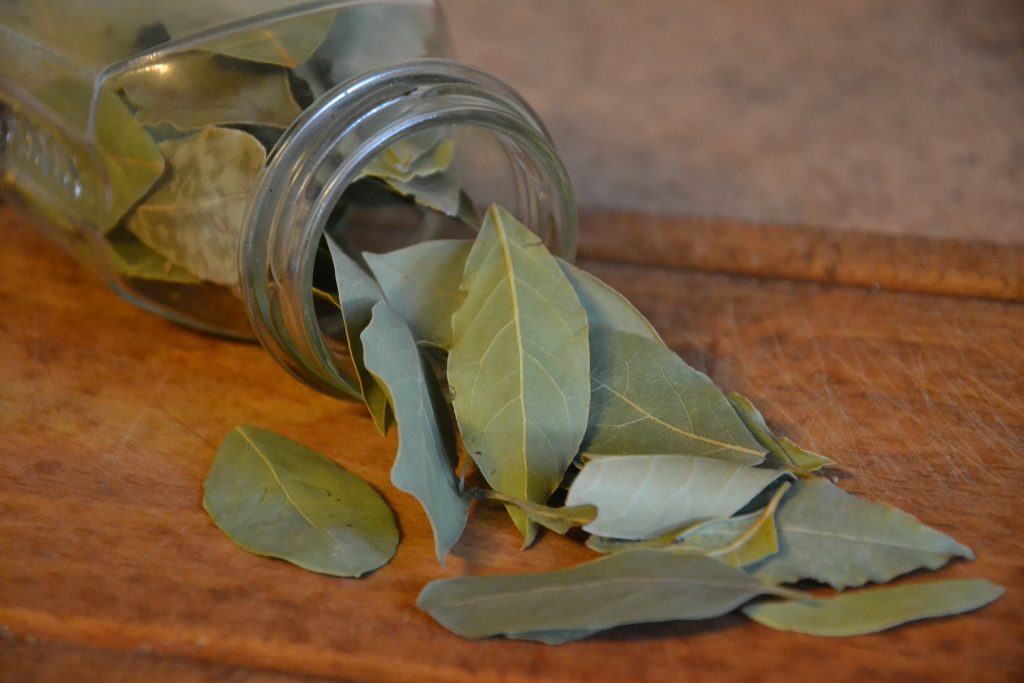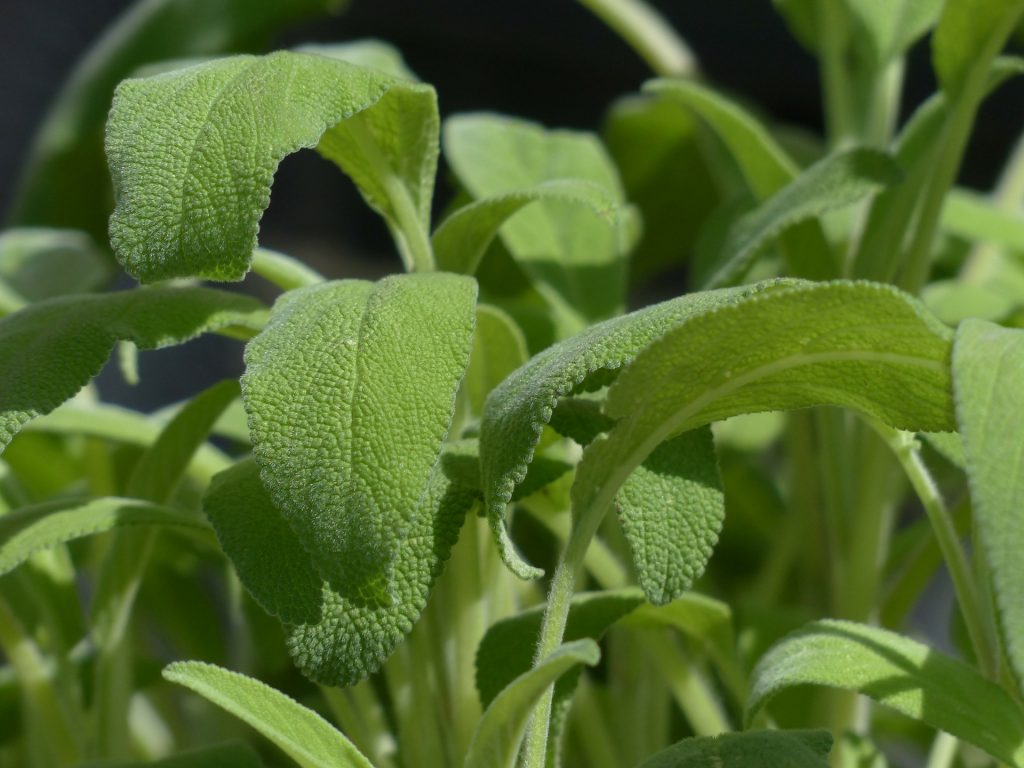
Pennyroyal
A native of Asia and the Mediterranean, the pennyroyal plant has straight branched stalks with green spear-shaped leaves that transmit peppermint aroma. It is consumed fresh, dry, in tea, in the bath or through oil. Pennyroyal helps treat stresses such as diabetes, poor digestion, colds, flu, asthma, bronchitis, menstrual cramps, nervous system seizures, nausea, and rheumatism, among others. It is a source rich in vitamin A, minerals such as potassium and magnesium and flavonoids, among other nutrients.
But there are contraindications, pennyroyal is not recommended for children under 12 years and pregnant women, especially in the first months, as it can cause abortion.

Coriander
The origin of coriander is uncertain, although, in the Mediterranean basin countries, they have long been used in cooking and medicine. This aromatic herb has well-cut green leaves that have a soft taste with an unmistakable and very striking scent. It is rich in vitamins (A, C, B3, and E), minerals (potassium, calcium, and phosphorus) and a major source of phytochemicals. The benefits of coriander include the detoxifying power of heavy metals in our body such as mercury, lead or aluminum (these can cause negative stresses in the heart, brain, nervous system, lungs, bones, or even degenerative diseases) and help clean toxins present in the liver, kidneys and digestive tract due to the high content of chlorophyll. This plant is also a cardiovascular protector, through the reduction of cholesterol and diabetes. The coriander has also an activity as antibacterial, antifungal and anti-inflammatory (relieves the pain of arthritis and reduces small swellings). Its properties work as a muscle relaxant, soothing the mind, combats insomnia and promotes skin health among others.
But be careful, eating too much coriander can cause convulsions or even have a toxic effect on the nervous system causing intoxication. It is not recommended during pregnancy or during breastfeeding, in gastritis stress, hyperacidity, after a heart attack, thrombosis, hypertension or diabetes. The ingestion of coriander seeds or tea also should not be made in excess as it may cause stresses on the liver or kidney. In doubt, always consult a specialist.

Oregano
A very popular plant in the Mediterranean countries, it has small, oval and pointed out green leaves, that present a strong and personalized aroma with a bitter taste. In nutritional terms, oreganos provide vitamins (A, B3, E, and folates), minerals (calcium, potassium, iron, phosphorus, and magnesium) and also have several phytochemicals (carvacrol stands out for its important antitumor, anticancer and analgesic properties, anti-inflammatory, hepatoprotective and antiplatelet agents).
The oregano also contains fatty acids with antioxidant properties, antibiotics, antivirals, immunostimulants, and rosmarinic acid, with strong antioxidant action. As a natural antibiotic, it is effective in treating gastroenteritis, urinary infections, and pneumonia, in addition to being antidiabetic.

Parsley
The green, typically split and pointed leaves offer a sweet and sensitive aroma that makes them indispensable in any kitchen, particularly in the Mediterranean countries. Must be consumed raw.
There are many varieties of parsley and it is a plant that can reach 80 centimeters in height. Contains vitamins (A, E and C), minerals (calcium, magnesium, and potassium), flavonoids and for phytochemicals, presents apigenin, luteolin, kaempferol, myricetin quercetin, and caffeic acid.
Parsley is a powerful diuretic, that cures the water retention in the body, and is recommended for kidney stones, rheumatism, and menstrual cramps. It fights colon and prostate cancer, is an antioxidant, anti-inflammatory, protects from negative cardiovascular stresses and enhances the immune system, among others. For example, a branch of parsley under the armpit will dry the breast milk.

Chives
A bulbous plant with long, cylindrical and hollow leaves that give off a smooth and spontaneous aroma, combined with a fresh and subtly sweet flavor with a slightly spicy aftertaste. A native of Asia and from the family of onions and garlic, the chives are more elegant and distinctive.
This plant is rich in vitamins (A, C, K), minerals (potassium, calcium, and phosphorus), in addition to providing protein, few carbohydrates, and zero fat.
Its ingredients are an ally in the prevention degenerative diseases (stomach, colorectal, prostate, esophagus, breast, colon, ovaries or lungs), strengthens the bones and nervous system (helps to stop Alzheimer’s disease), allows recovering from negative stresses in the digestive system (it’s antibacterial), fight against bad cholesterol and lowers blood pressure (it decreases the risk of stroke-type heart attacks and heart attacks). It improves the immune system, ocular (slows the onset of cataracts), respiratory, and is an ally in pregnancy so that the fetus has balanced health, in addition to improving the skin, strengthen the hair and helps to control the weight.

Mint
The dark green and the intense aroma of sweet spicy menthol, but refreshing and perfuming, makes this plant distinct as an aromatic herb. It comes from the Mediterranean region but is used a bit throughout the world, and there are many varieties of its kind whose main distinction is the intensity of the menthol flavor and the diverse aftertaste (from orange to chocolate).
The mint, also known as peppermint, grows very easily reaching up to 100 centimeters in height and its green leaves are strong, oval and wrinkled. Rich in vitamins (A, C) and minerals (calcium, potassium, phosphorus, and magnesium), mint offers many therapeutic properties, including antispasmodic, analgesic, antiseptic, anti-inflammatory, digestive, anesthetic and expelling.
In reality, the consumption of mint improves digestion, reduces headaches (rubbing some leaves on the forehead helps reduce migraines or inflammations), travel sickness or pregnancy, decongests the airways (tea) in case of colds, is an ally against fatigue (gives energy reducing fatigue, anxiety and discouragement) and cholesterol, protects the skin (exfoliating and moisturizing effect), strengthens the nervous system and the immune system. It is also an ally in favor of rebalancing the breast, prostate, liver, skin, lung, colon or Alzheimer’s.
The intense perfume of the mint makes it also be used as an insect repellent.
But not all are benefits, mint must not be given to children under five as it can cause serious allergies. The excess consumption also may cancel some of its benefits and in the case of men may cause the reduction of testosterone.

Basil
Owning a fresh, strong and ardent scent that is launched through its large, oval and wrinkled greenish-colored leaves, basil offers a sweet taste with a spicy touch and notes of cinnamon, lemon, and anise. A native of Asia, although it is already spread throughout the Planet, it is one of the herbs indispensable to the balance of our body, which is why it is widely used in cooking, but there are also those who consider it to promote reconciliation and love. In Greece, for example, the basil is planted at the door of the house to welcome, and also to ward off flies.
In nutritional terms, basil provides vitamins (A, E, C) and minerals (calcium, potassium, phosphorus and magnesium), nutrients that make this plant antibacterial, a protector of the kidneys, heart (improves blood flow, controls cholesterol and protects against free radicals), helps to recover from bronchitis and respiratory tract infections, is an antioxidant that blocks the growth of cancer cells and strengthens the nervous, immune and digestive systems. However, the consumption of basil is not recommended for pregnant women, nor for children under 12 years of age.

Rosemary
Small, opposite, slender and pointed leaves, reminiscent of pine, greyish-green color fill the woody stalks of a trunk that can reach two meters high. From the height of this rustic elegance, the rosemary transmits a unique, strong, hot and contagious aroma, with a fresh, sweet and energetic flavor. It originates in the Mediterranean and its qualities give it a magical status of joy because it is still used today in many costumes and decorations, such as weddings.
In nutritional terms, it is an excellent source of vitamins (B1, B2, E, C) and minerals (potassium, calcium, sodium, and phosphorus), nutrients that transform it into an anti-inflammatory, muscle relaxant, fortifying, healing, antiseptic and bactericidal. This plant also has large amounts of antioxidant substances, capable of slowing the aging of cells and eliminating toxins from our body.
Rosemary helps in the treatment of rheumatism, depression, fatigue, poor circulation, intestinal gases, digestion and breathing systems, insomnia, headaches, menstrual cramps and wound healing, strengthens the immune system and helps rebalance stresses (breast, prostate, colon, skin), among other benefits. It can be consumed in tea (two tablespoons of rosemary for a quart of water and boil two minutes) or in oil. It is easy to find in grocery stores and supermarkets.
Rosemary consumption should not, however, be exaggerated as it may cause inflammation of the kidneys or gastroenteritis. It is also not recommended to use for pregnant women, children under 12 years or people with negative stresses in the heart and epilepsy risks.

Thyme
A native of Europe, with the scientific name of Thymus vulgaris, its leaves are longer than broad, with a linearly and elliptically form, in a light grayish-green. These have a bitter taste and a strong and enveloping aromatic fragrance that are very attractive, in particular for the bees. The cooks also do not abdicate of this plant to give a special touch to their dishes, but their properties are fundamental for our organism due to its action extorting, antiseptic, antibacterial, antiviral, stimulant and vermifuge, among others.
Thyme can thus treat stresses of asthma, bronchitis, colds, flu, constipation, pneumonia, rheumatism, swelling, dislocation, lowers blood pressure, acne and rebalances stresses of the breast or colon.
However, thyme must not be consumed during pregnancy in the breastfeeding period by children under six years of age, people with cardiac stress and should be used cautiously during menstruation in case of gastritis or ulcers, intestinal stress or liver.

Laurel
The laurel is an imposing tree, it can reach 10 meters in height, and of its treetop stand out dark green leaves in the form of a spear, smooth, hard and aromatic, but with a bitter taste. The laurel has been used since immemorial times and has gained the status of a symbol of victory and immortality (the use of the laurel wreath will originate in Greek mythology in the unrequited love of Apollo [patron of triumphs, fine arts, and medicine, besides of the archetype of the masculine beauty] by the nymph Daphne, who was transformed into a laurel to escape to its harassment. Impossible to conquer her, Apollo will have made a crown of the said laurel, thus uniting itself to its beloved).
All the chefs also do not abdicate the laurel in their day to day, being the most effective use when the leaves are dry, but be careful, you can not eat the laurel.
The main nutrients of laurel are carbohydrates, vitamins B6 and C, potassium, fiber, magnesium and folic acid, among others, which allow offering anti-inflammatory, antirheumatic, diuretic, digestive, hepatic, excipient and stimulant properties. It has anticancer compounds that allow rebalancing breast and leukemia stress, reduces diabetes, cholesterol and blood pressure, among other benefits.
Laurel tea is recommended to prevent colds and in case of fever. To prepare the tea just add three leaves in a liter of water and boil for five minutes.
Laurel consumption is not recommended for pregnant or lactating women.

Fennel
A native of Asia countries, Egypt, and Greece, it has a tall, firm stem with multiple branches of a fairly lively green that ends in long thin and very lacy leaves. Its fruit is a dry, oval and flattened seed with a strong anise aroma and flavor. The bulb, leaves or seeds can all be consumed in cooking, tea or cosmetics, as they are a great source of nutrients like vitamins (A and C), minerals (calcium, iron, magnesium, potassium, zinc, and phosphorus), as well as possessing properties which inhibit the metabolism of the cancer cells which may result for example in breast degenerative disease. The fennel has antispasmodic, stimulating, relaxing, vermifuge, antirheumatic properties that have an effect on the brain, the respiratory, digestive, and immune system, enhances memory and helps prevent premature aging such as the appearance of wrinkles.
Consumption of tea (three tablespoons of fennel seeds for one liter of water) helps to fight intestinal gas, in the breastfeeding phase helps the milk production and prevents the baby colic, promotes digestion and appetite, improves bad breath, controls cholesterol and lowers blood pressure, among other benefits.
But note that fennel should not be consumed by patients who have ulcers, reflux or colic, and fennel oil must be avoided by pregnant women (the seed may also cause abortion) or while breastfeeding or by whom is taking iron supplements.

Sage
With long, velvety, rusty, and wrinkled leaves of greyish green color with a flavor of slightly spicy camphor, the sage is a native of the Eastern Mediterranean region. Known also as the holy herb, due to its properties that in the laboratory has already been proven to help treat Alzheimer’s disease and slows down aging.
Its properties include antioxidant, anti-inflammatory, antirheumatic, antiperspirant, balsamic, digestive, stomach, germicidal, hypoglycemic (lowers glycemia) and tonic. It is indicated as a capillary stimulant, mucosal healing, for gingivitis, thrush, bronchitis, cough, and catarrh, for gastrointestinal stress, diabetes control, cholesterol, among others.
However, sage must not be consumed by pregnant women (stimulates contractions) or while breastfeeding, by people with impaired renal function, during menstruation, and should not be used in a big amount or during too long. In case of any doubts or fears, you should always contact a health professional.
This text is an awareness. According to the season of the year and the moment in which you are, it is up to each one to feel if they should consume this food. The dosage and frequency depend on the nature and physical condition of each Human Being.
Feel more about feeding in:
Eat aromatic herbs for your health




